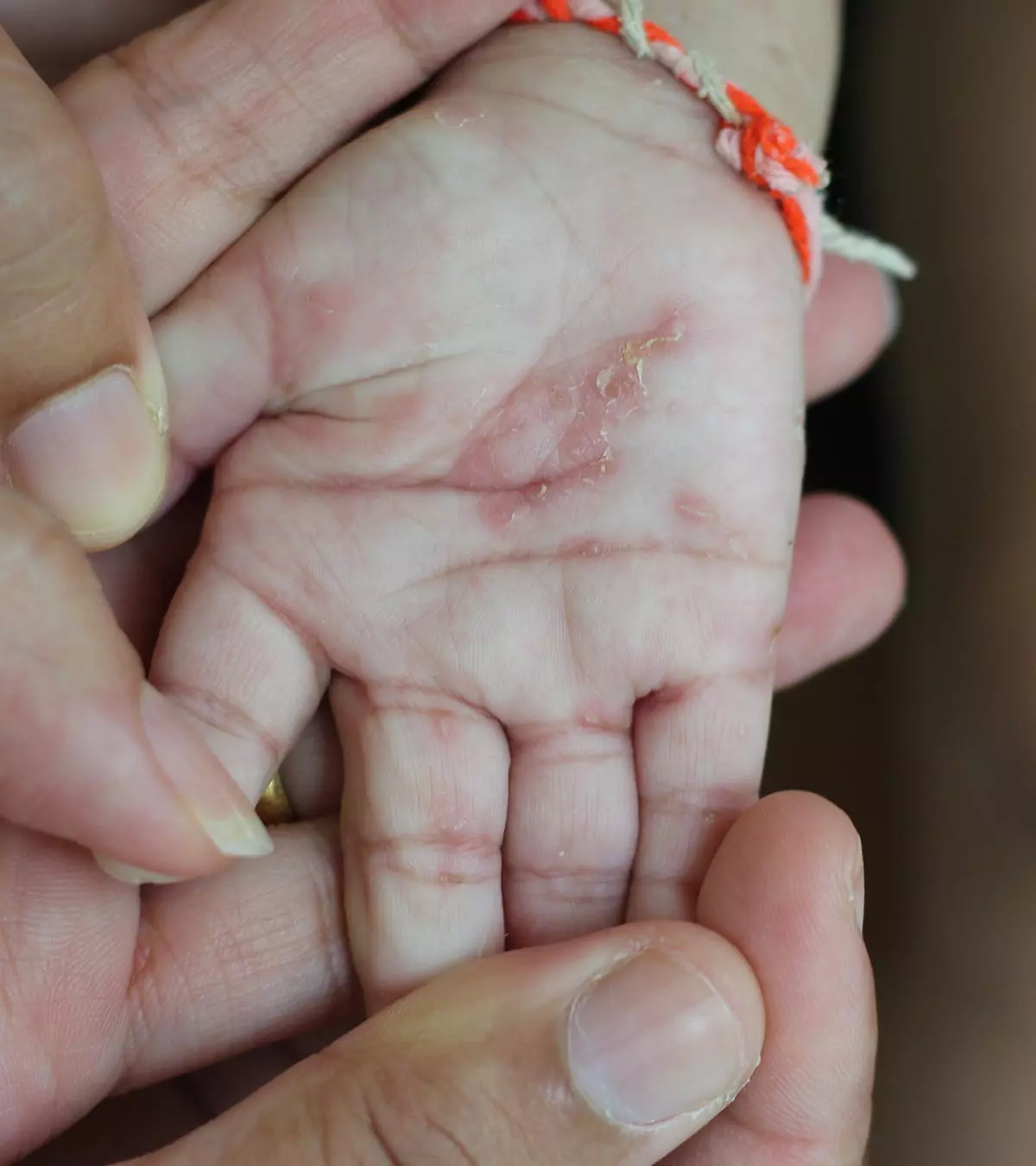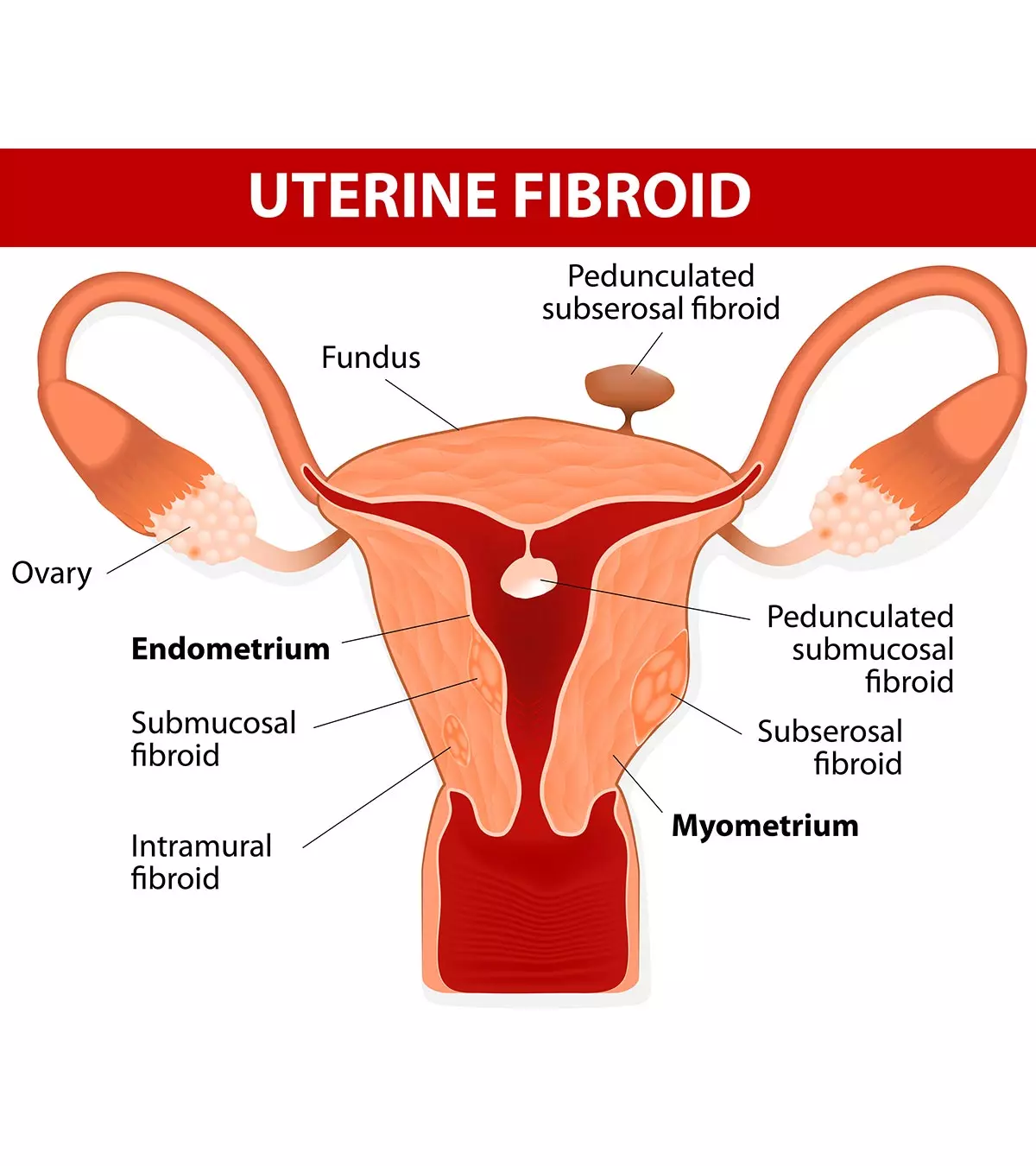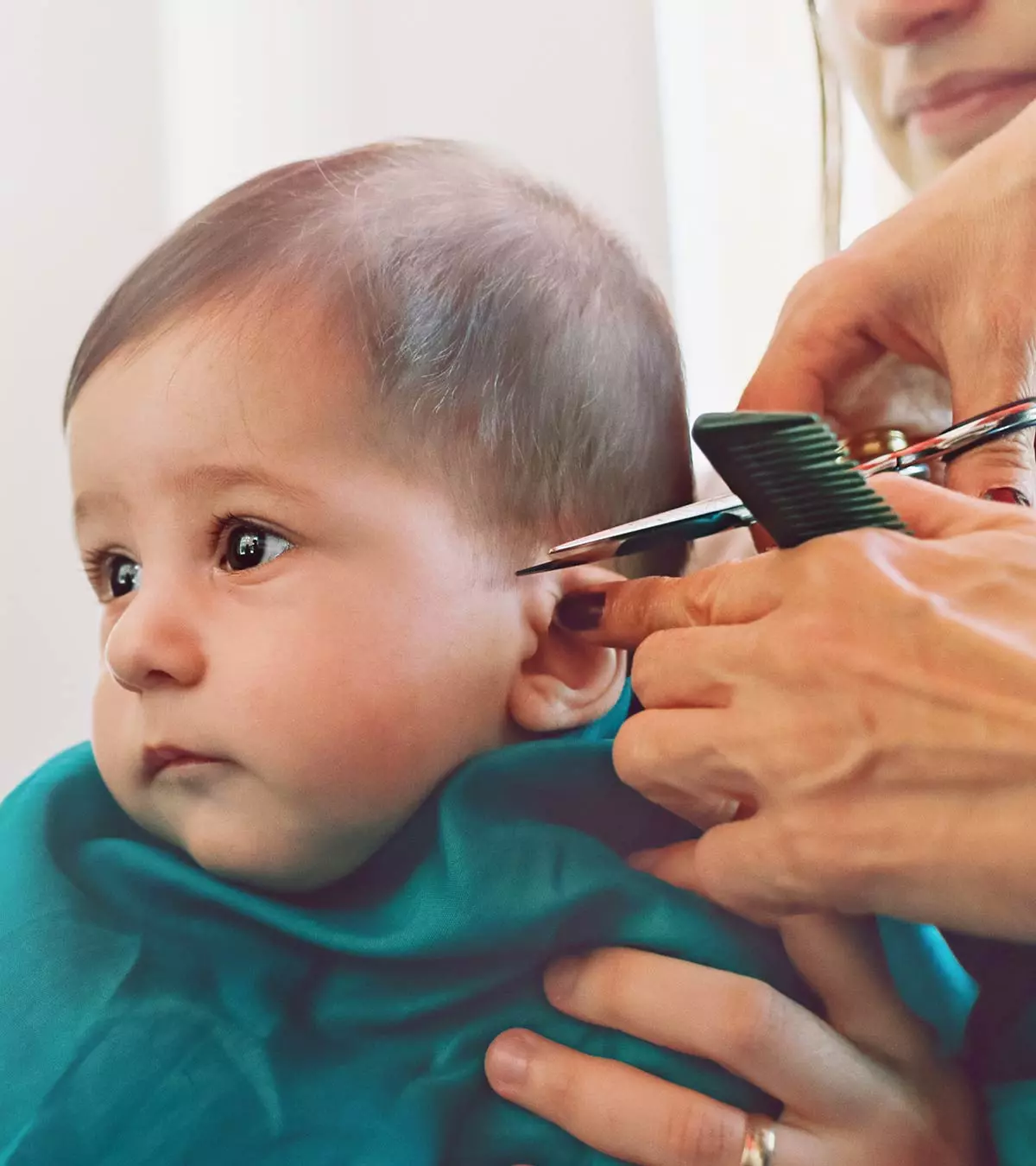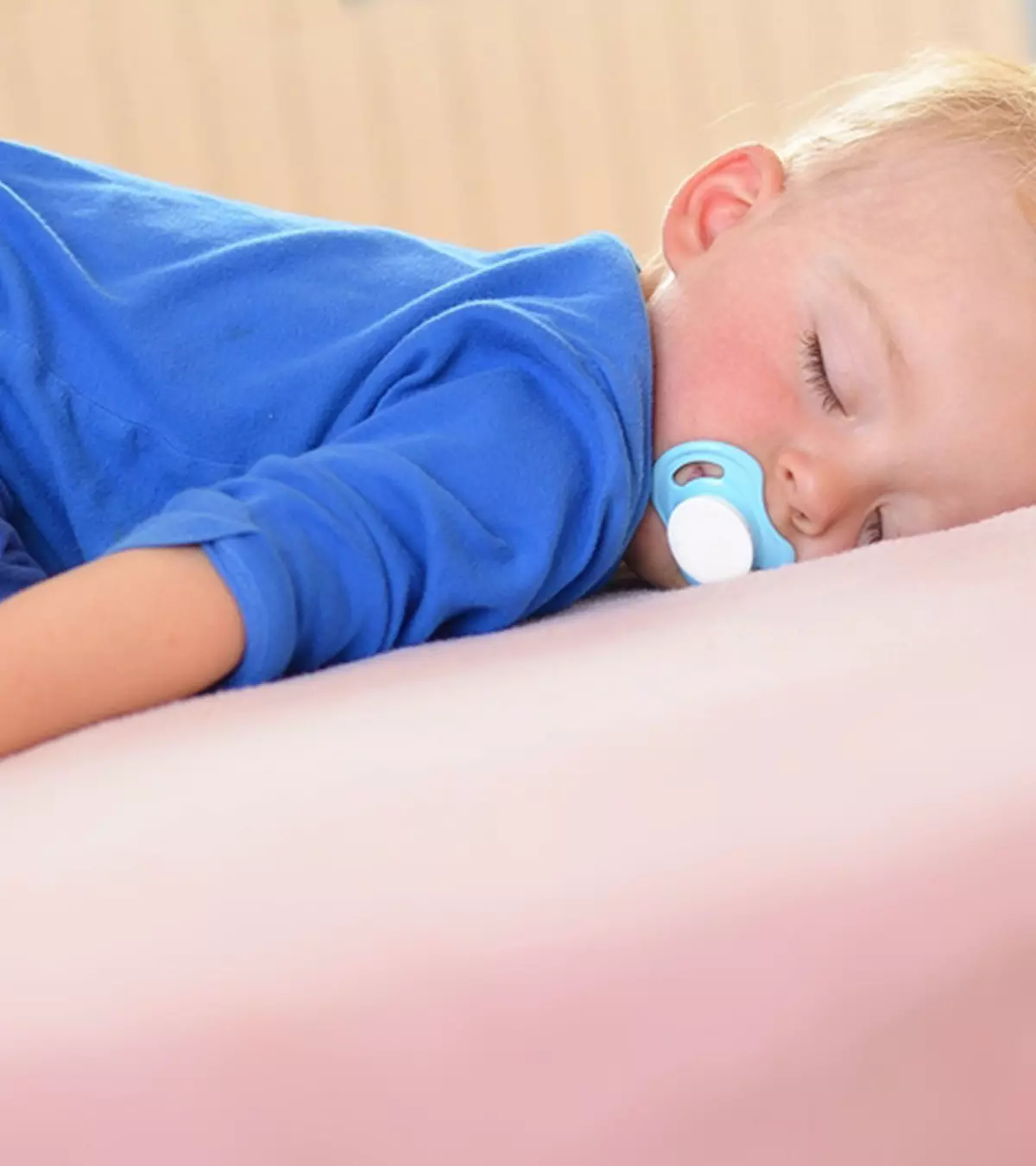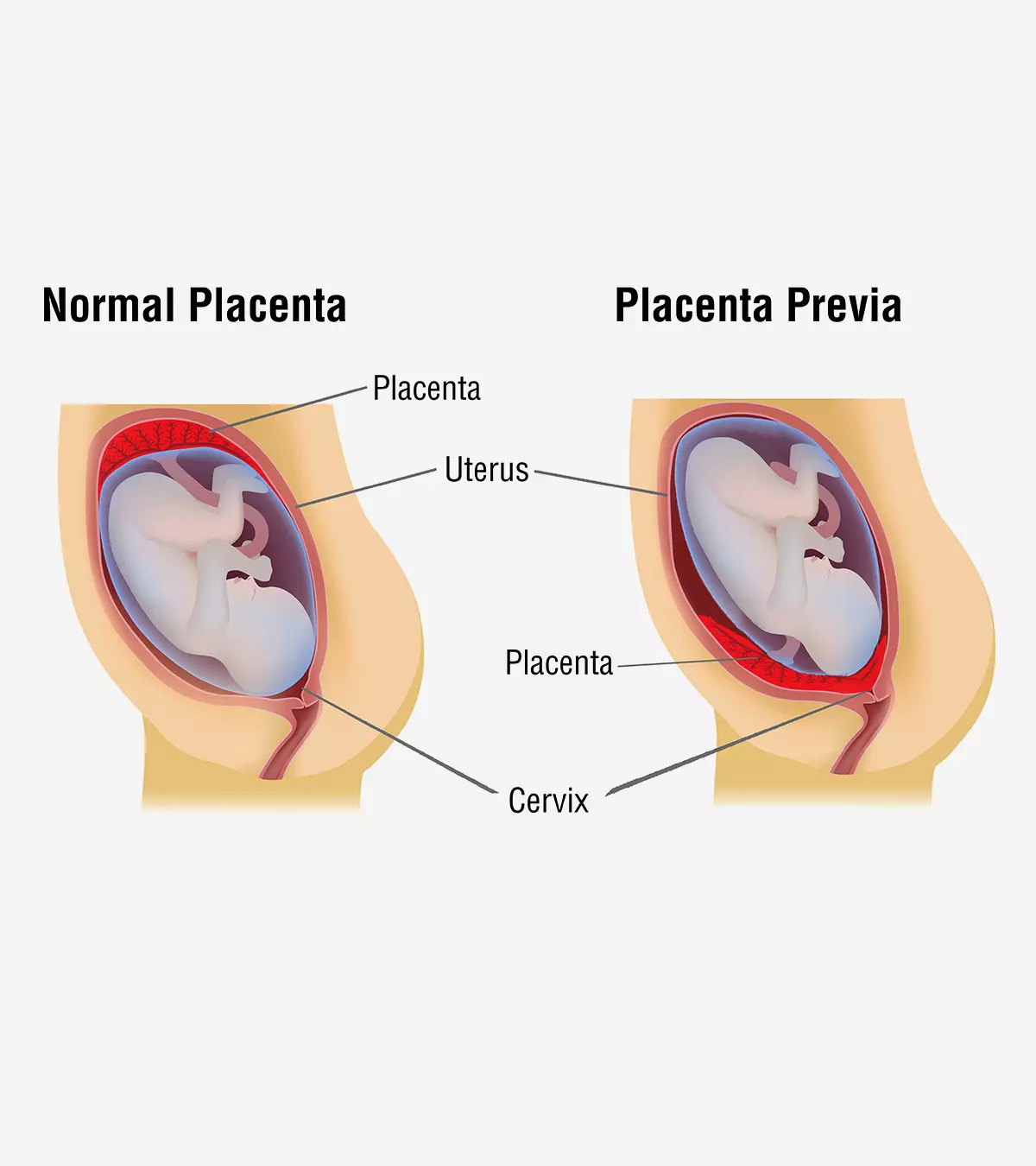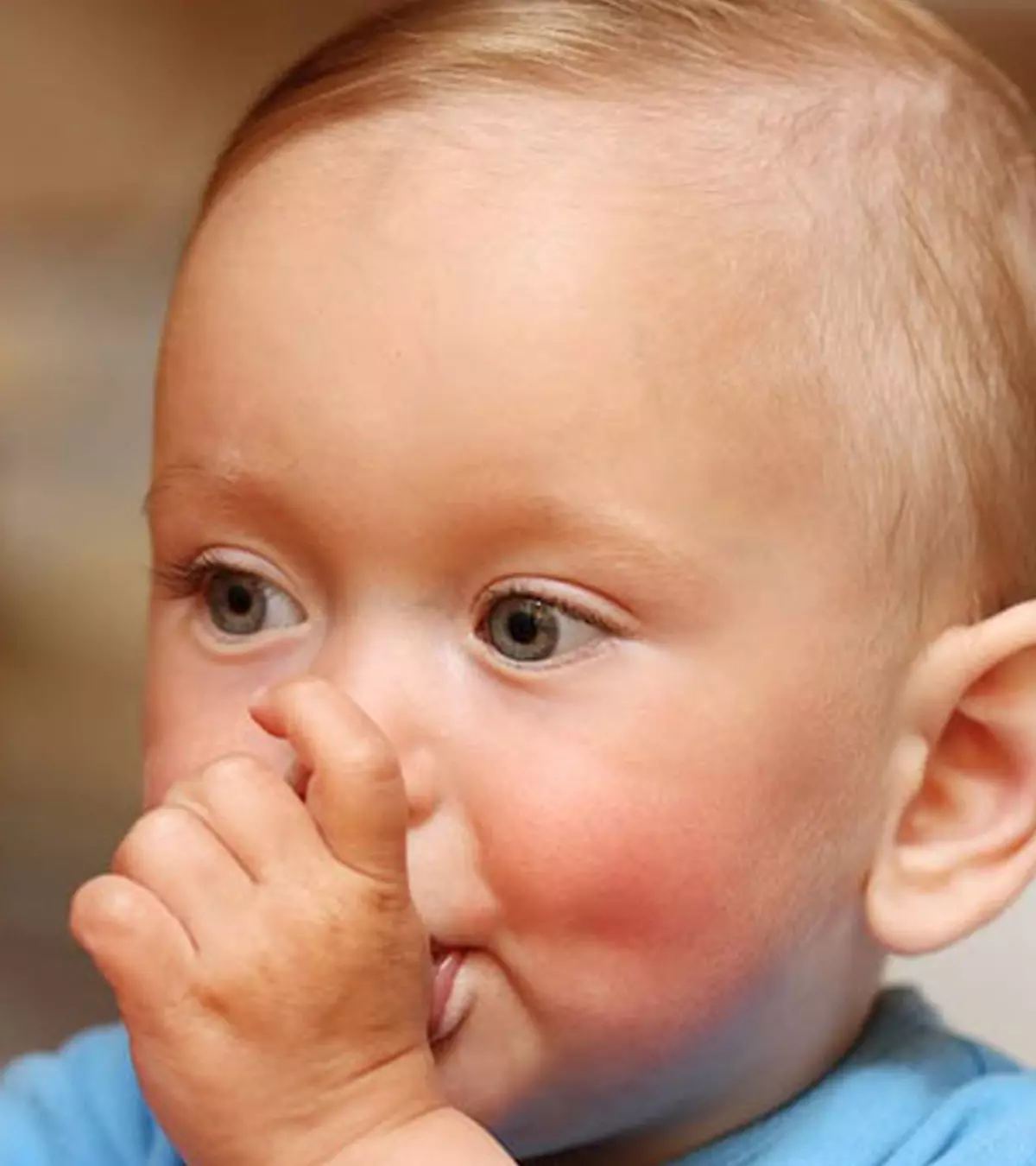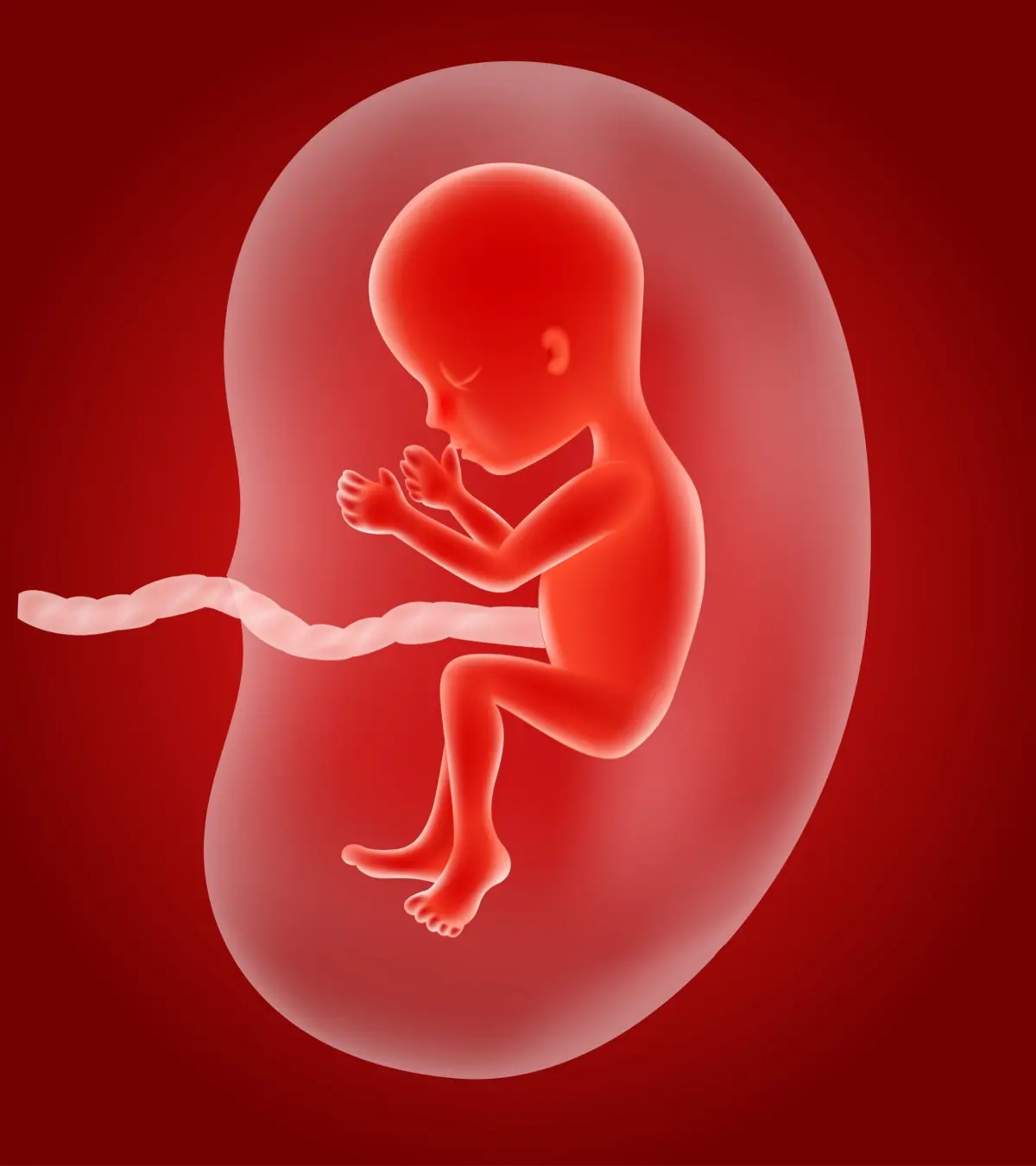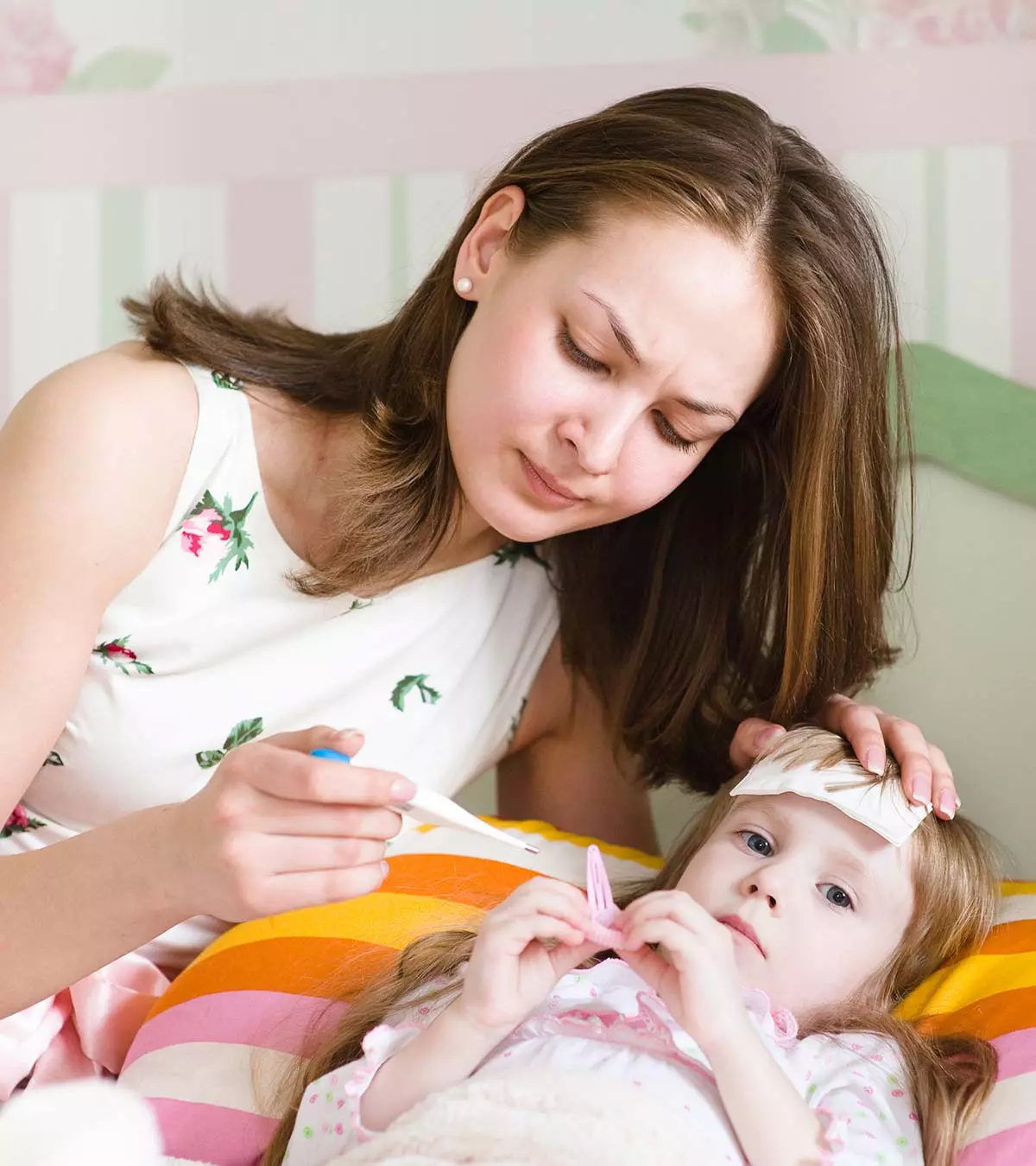
Image: Shutterstock
Allergies in children are a common occurrence. The most common trigger that causes allergies are pollens, dust particles, certain food items, medicines etc. An allergy can be defined as the immune system’s reaction to an unknown or foreign substance. Usually, allergies can be treated with the help of medication and simple home remedies. However, in some severe cases, they might also turn out to be life-threatening. As per the The American College of Allergy, Asthma and Immunology “children with allergies miss hundreds of thousands of school days every year (1).” Read on to know more about allergies, causes, triggers, treatment options, and prevention techniques.
Key Pointers
- The most common types of allergies in children are seasonal allergies, skin allergies, food allergies, and other allergies.
- Seasonal allergies can result in a sore throat, runny nose, watery eyes, and congestion.
- Skin allergies can lead to rashes, itchy skin, and redness, while food allergies can cause nausea, vomiting, diarrhea, and hives.
- Other types of allergies include pet allergies and medicinal allergies.
- If a child experiences a severe allergic reaction, it is crucial to seek medical attention from a doctor.
Types Of Allergies In Children
Allergies can be classified based on the part of the body affected and the mode of transmission of the allergen. Some major types of allergy that affect children are:
- Seasonal or Respiratory Allergies
- Skin Allergies
- Food Allergies
- Other Allergies
According to a 2021 survey by the CDC National Center for Health Statistics, about 27.2% of children experienced one or more allergy conditions, including seasonal allergies, eczema, and food allergies. Seasonal allergies were common, affecting 18.9% of children, while eczema affected 10.8% of children, and food allergies were identified in 5.8% of children.
We will tell you about each type of allergy, its causes, symptoms, and natural remedies.
Seasonal or Respiratory Allergies
Seasonal allergies may occur at any time of the year. They strike when the child gets exposed to environmental allergens including pollen, dust, smoke etc. These can affect around 40% of children (2).
Causes of seasonal allergies
The causes could vary from one child to another. Some of the basic ones are:
- Pollen from grass and trees and exposure to pesticides and fertilizers could be the causes for seasonal allergies in spring (3).
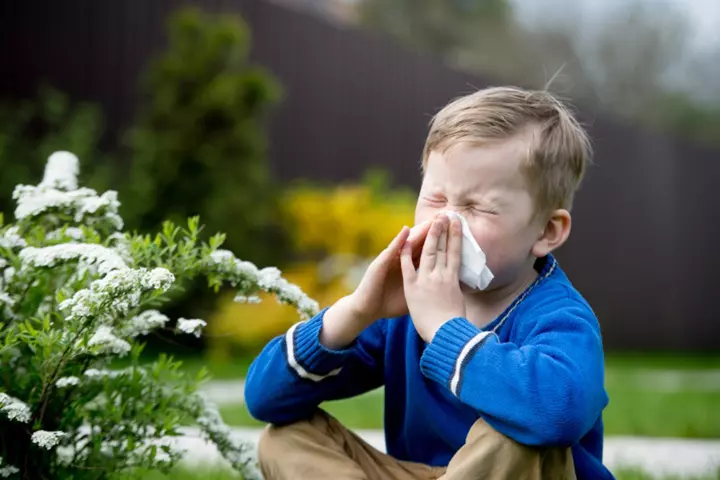
- Ragweed and grass are the primary triggers in summer for allergies (4).
- Pigweed, cocklebur, burning bush, tumbleweed, and lamb’s-quarters may lead to fall allergies (4).
- During colder days of winter, children are mostly indoors. Dust, latex in clothing, and mold are the common triggers for seasonal winter allergies (5).
- Hay feveriAn allergic reaction to allergens such as pollen, pet hair, mold, and dust mites. is a common trigger for seasonal allergy. It could occur in any season. The pollen could be from weeds, grasses, and trees (6).
- Dust in the atmosphere, such as dust blowing in the sports field, smoke, or pollution smoke from vehicles.
- Dust in carpets, curtains, bedding, comforters.
- Animal fur, bird feathers and stuffed toys with fur. This is specially common in children playing with cats, dogs etc.
- Sometimes, allergic reaction occurs after the use of perfume, talcum powder, burning perfumed incense.
- Insect stings or bites can cause a severe allergic reaction.
Symptoms of seasonal allergies
The following are some of the common symptoms of seasonal allergies:
- Sore throat
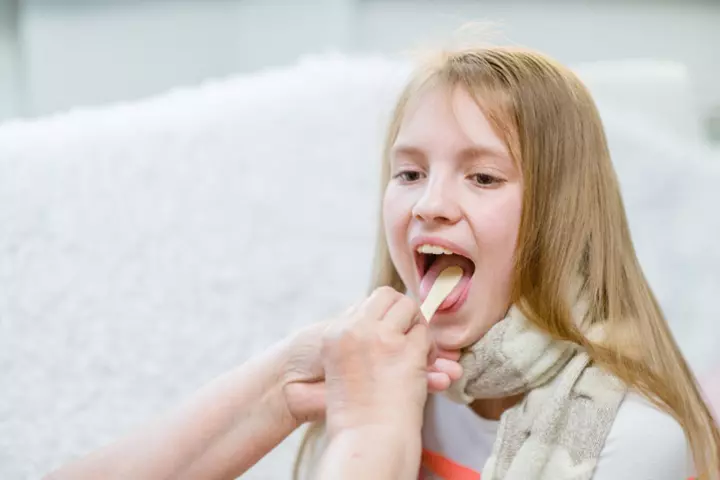
- Sneezing and runny nose
- Watery eyes
- Congestion and chronic cough
- Dry and hacking cough, bouts of cough
- Itchy eyes and nose
- Blocked nose
- Wheezing, grunting
- Increased respiratory rate.
- Disturbed sleep and behavioral issues
- Fatigue
- SinusiHollow and interlaced air-filled spaces in the skull. and ear infections
- Asthma
Relief From Seasonal Allergies
Some of the remedies that may help provide relief to the child with seasonal or respiratory allergies (7).
- Antihistamines are known to treat symptoms of allergy, including hay fever. A pediatrician can prescribe the right one, be it a tablet, injection, liquid, or capsule.
- Doctors may prescribe decongestants (tablets, liquids, nose drops, or nasal sprays for kids) for cold symptoms, including nasal congestion.
- Eye drops
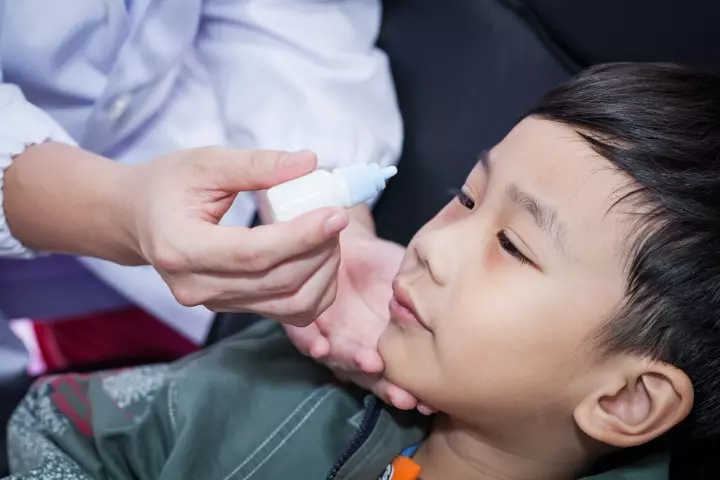
- In some instances, doctors may prescribe allergy shots or nasal steroids if the regular medicines are ineffective.
- Bronchodilators in case of wheezing and nebulization.
Stephanie Weinert, a mother of five children and a blogger, shares some effective ways of dealing with seasonal allergies since her son Mark suffers from it. She says, “I make sure my Mark has clean clothes every time he comes back into our house. Even if he’s only walked to the car and back from a trip to the grocery store, I still change his clothes when we get back inside. Even a little bit of pollen on his t-shirt can send him into an allergy attack, so it’s better safe than sorry. I wash his sheets at least twice a week during allergy season, and I change his pillowcase every single time he goes to bed (if he’s taking a nap that day, that means I change the pillowcase before nap time and again before bedtime)… Keeping my son’s consumption of gluten, dairy, sugar, and processed foods to a minimum definitely helps his ability to deal with seasonal allergies. It doesn’t take away his symptoms entirely, but there’s definitely a difference when he’s eating a very clean diet (ⅰ).’’
 Quick tip
Quick tipSkin Allergies in Children
Skin is the largest organ of the body and it can be affected by allergens (8) (9).
Causes of skin allergies
Various substances and compounds could trigger an allergic reaction of the skin.
- Preservatives: Some children may suffer from allergies when their skin gets exposed to certain ingredients. Some common allergens include formaldehyde and methylisothiazolinone releasers such as DMDM hydantoin, diazolidinyl urea, and 3-diol bronopol. These could be found in moisturizers, facial cosmetics, shampoos, and other cosmetic products.
- Metals: According to the American Academy of Dermatology, approximately 11 million kids suffer from nickel allergy. This metal is usually found in jewelry, hooks, zippers, and in some straps too. Even face paints contain small amounts of these metals.
- Botanical allergens: Some children may have skin sensitivity. Contact with certain essential oils such as tea tree, lavender, peppermint, close, and citronella may cause skin reactions.
 Things to know
Things to know- If the child accidently touches an irritating chemical.
- Some children are allergic to polyester clothes, wool or other fabrics.
Symptoms of skin allergies
Some of the common signs of skin allergies are (10) (11):
- Dry or itchy skin
- Redness on the skin

- Rashes at the joints such as elbow, behind knees and ears, and on wrists
- White or red bumps called hives, develop on the body
- Change of skin color around lips, cheeks, or eyes
- Blisters or burning sensation
- The rash is maculo papular and blanches on pressing. It appears all over the body. It is important to differentiate this rash from chicken pox, measles etc.
- The child complains of intense itching.
Natural relief from skin allergies
Natural remedies may help treat some skin allergies or provide relief from the symptoms (11) (12) (13):
- Applying ice packs or wet cloth on the itchy skin may provide relief. Cooling agents, such as calamine and menthol, help.
- Wearing cotton fabric may avoid itchiness in the case of skin allergies. Also, bathing in lukewarm water may help.
- Doctors may prescribe antihistamines to some children based on the symptoms.
- In some cases, doctors may suggest applying calcineurin inhibitorsiMedicines that inhibit the production of calcineurin, an enzyme that is responsible for inflammation. or corticosteroid (topical steroid) to reduce inflammation.
- Moisturizers such as Vanicream and petroleum jelly may help in reducing irritation.
Food Allergies in Children
According to the Food Allergy Research & Education, one in 13 children in the US has a food allergy (14)
. When the child’s body reacts specifically to certain foods, it is called food allergy. It happens when the immune system confuses food compounds to be pathogensiA disease-causing microorganism. and mounts an immune response. These responses are mostly initiated by immunoglobulin E (IgE) antibody. Food allergies could range from mild to severe (life-threatening).
Causes of food allergies

Each child can be allergic to different food, but some foods cause allergies more commonly than others (15).
- Milk, eggs, soy, wheat, and tree nuts may cause mild allergy symptoms.
- Peanuts, shellfish, and fish may cause severe symptoms in some children.
- Cow milk allergy.
- Gluten allergy.
 Quick fact
Quick factSymptoms of food allergies
The symptoms of food hypersensitivity may start within a few minutes or hours after eating the food. Mild symptoms could affect the nose, mouth, gut, or skin. Severe symptoms could affect the throat, lung, mouth, gut, skin, heart, or other organs (15).
- Nausea, vomiting, cramps, and discomfort
- Vomiting and diarrhea
- Swelling and itchiness in the mouth, on the tongue, near lips, or in the throat
- Wheezing or difficulty in breathing
- Coughing or runny nose.
- EczemaiA skin condition characterized by dry, itchy, and inflamed skin. or hives
Natural relief from food allergies
- There is no medication to treat food allergies. The only option is to avoid the allergen completely. If the food is a significant source of nutrition, then the child’s doctor may suggest supplements and alternative foods.
- Antihistamines need to be given.
Other Allergies in Children
1. Pet allergy
Pet dander (such as fur, feathers, or flakes of skin), urine, and saliva could be potential allergens (16). The symptoms of pet allergy may include a skin rash, runny nose or sneezing, coughing, difficulty in breathing, and itchy or red eyes.
The treatment varies based on the severity of the symptoms. The mild ones may go away by washing hands with soap and water. Vacuuming and keeping the house clean can help get rid of the pet dander. However, the severe symptoms may be treated by allergy shots (prescribed by a doctor). The child should preferably avoid the pet to prevent allergies in the long run.
2. Medicine allergy
Certain medications could cause mild to severe allergic reactions in children. The symptoms may include pimples or redness from different kinds of steroids, purple or red rashes from antibiotics (that have phenolphthalein, tetracycline, or sulfa), purple area due to certain blood-thinners, and blisters due to sulfa, penicillin, or some antibiotics (17). Allergic reactions are very common with antibiotics mainly penicillin groups. Always note what drugs your child is allergic too and avoid it next time.
Based on the severity of the symptom, drug allergies in children may be treated with epinephrine, antihistamines, or corticosteroids as prescribed by the doctor. If the medication is temporary, then the symptoms go away on suspending the dosage. Parents can also discuss with their child’s doctor about alternative medicines that are unlikely to trigger an allergy.
When To Call A Doctor?
It is good to see a doctor if your child shows severe symptoms of an allergy. Also, if natural allergy remedies do not provide relief, then consult a doctor for appropriate treatment.
Frequently Asked Questions
1. What is the difference between food allergy and food intolerance in kids?
Food allergy is an immune system reaction where the body reacts to certain food. In contrast, food intolerance is a digestive system issue where the body is unable to digest a particular food. Generally, food allergy affects all body systems, causing mild to moderate symptoms. However, food intolerance only affects the digestive system and its symptoms are rarely adverse (15).
2. Which children are at risk for allergies?
Allergies can affect children of any age, race, gender, or socio-economic status (21). In fact, allergies are common in children and can happen at any age.
3. How common are allergies in children?
According to the American Academy of Allergy Asthma & Immunology (AAAI), “Worldwide, sensitization rates to one or more common allergens among school children are currently approaching 40 to 50% (22).”
Allergies in children can occur due to triggers such as dust, pollen, or a particular food. Most allergic reactions are manageable and seldom a cause for concern. However, severe allergic reactions such as anaphylaxis can occur in some cases, warranting immediate medical attention. Usually, allergies are hereditary though they can also be sporadic. The allergy treatment depends on the type and intensity of the reaction. Applying an ice pack on itchy skin, wearing cotton fabric, and bathing with lukewarm water may offer some relief. Keeping your child away from known allergens is the best way to avoid allergies in children.
Infographic: Common Types Of Allergies In Children
Children may develop allergies for several reasons, whether it is food, medication, or a weather change. These allergies are classified into different categories depending on the cause. Since most allergy symptoms overlap, it can be difficult for a parent to know the cause. The infographic below helps you learn the different types of allergies and their specific symptoms.

Illustration: Momjunction Design Team
Illustration: Types Of Allergies in Children And Remedies

Image: Stable Diffusion/MomJunction Design Team
Personal Experience: Source
MomJunction articles include first-hand experiences to provide you with better insights through real-life narratives. Here are the sources of personal accounts referenced in this article.
i. 7 ways to help a child fight allergies.https://stephanieweinert.wordpress.com/2018/09/15/7-ways-to-help-a-child-fight-allergies/
References
1. Diagnosing Allergies in Children; American College of Allergy, Asthma & Immunology
2. Seasonal Allergies: Keeping Symptoms in Check; Children’s Hospital of Philadelphia (2019)
3. Spring Allergy Tips; National Jewish Health (2016)
4. Common Seasonal Allergy Triggers; American College of Allergy, Asthma & Immunology
5. Seasonal Allergies in Children; healthychildren.org
6. Pollen Allergy; Asthma and Allergy Foundation of America
7. Treatment for a Child’s Allergy to Dust or Pollen; Lucile Packard Children’s Hospital Stanford
8. Watch Out for the Most Common Allergies in Children; Blank Children’s Hospital
9. M. Boyle, What causedyour child’s allergic skin reaction?; ewg.org
10. Skin allergy; American Academy of Allergy Asthma & Immonolgy
11. Skin Allergy; American College of Allergy, Asthma & Immunology
12. Contact Dermititis; Harvard Health Publishing
13. Managing Itch; National Eczema Association
14. The Food Allergy Epidemic; Food Allergy Resrach & Education
15. Food Allergies in Children; John’s Hopkins Medicine
16. Pet Allergy; American College of Allergy, Asthma & Immunology
17. Medicine Rashes in Children; University of Rochester Medical Center
18. How Can I Control Indoor Allergens and Improve Indoor Air Quality?; Asthma and allergy foundation of America
19.12 Common Summertime Skin Rashes in Children; American Academy of Pediatrics
20. Children and Allergies; American College of Allergy, Asthma, and Immunology
21. Allergies In Children; Cedars Sinai
22. Allergy Statistics; American College of Allergy, Asthma & Immunology
Community Experiences
Join the conversation and become a part of our nurturing community! Share your stories, experiences, and insights to connect with fellow parents.
Read full bio of Dr. Mubina Agboatwalla
Read full bio of Dr. Ritika Shah
Read full bio of Swati Patwal
Read full bio of Ghazia Shah





